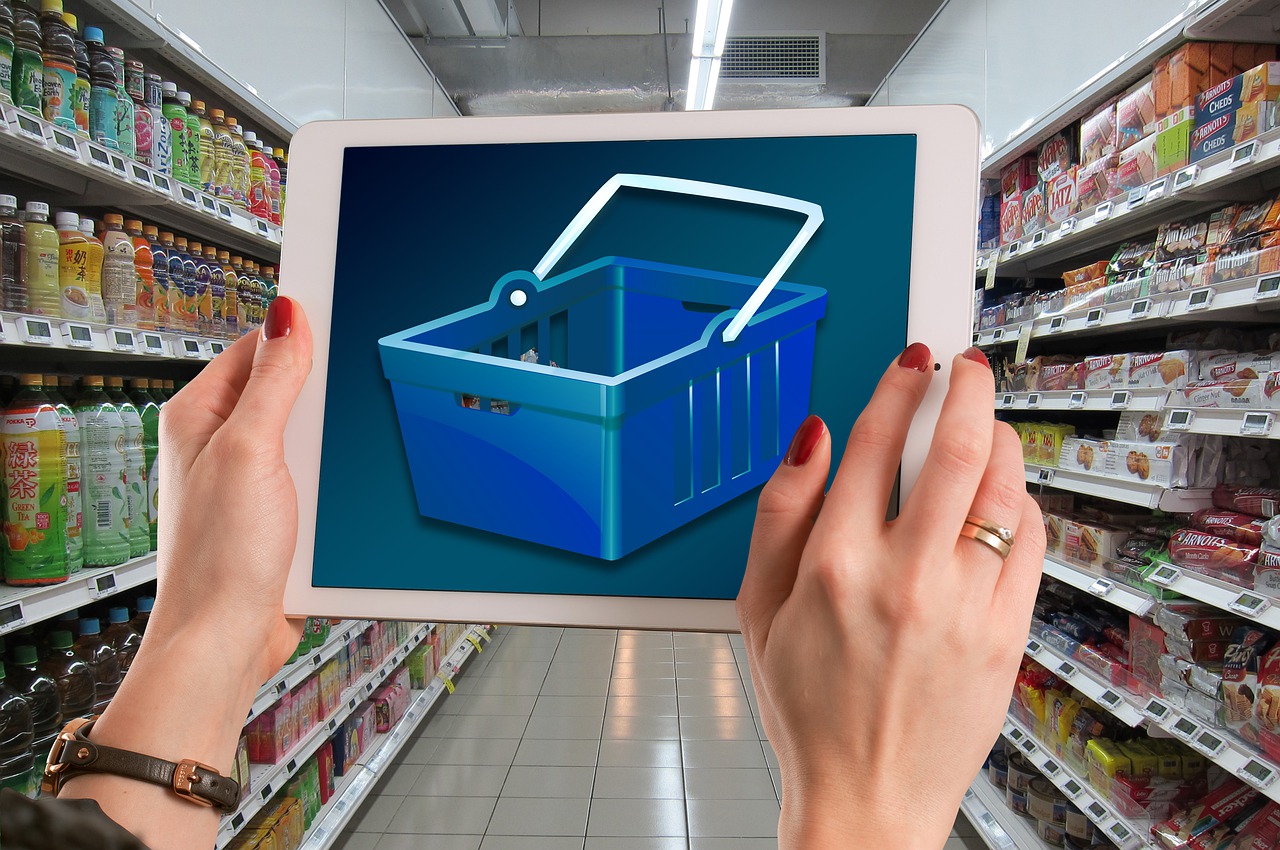In an ever-changing retail environment, grocers and online food retailers are constantly innovating and utilizing technology to ease the consumer shopping journey. They’re also finding ways to use technology to streamline business operations. From smart shelf labels to the use of artificial intelligence, technology is paving the way for a grocery experience unlike anything shoppers have seen before.
What’s driving the change?
Due to an increasing consumer demand for everything from online grocery shopping to more personalized advertising, the rise of technology in the grocery industry is reaching a fever pitch. Cooling solutions provider Phononic found that 89% of shoppers want to shop in a supermarket that understands how to make buying groceries more efficient, while the Food Marketing Institute and Nielsen recently reported that 70% of grocery shoppers will be shopping online in as few as five to seven years.
“The grocery industry is currently in the age of digital experimentation, where the roadmap on how to navigate and achieve real and profitable growth continues to evolve,” said Nielsen’s Chris Morley in a statement. Analytics will be crucial to understanding the constantly evolving digital shopper, Morley said, and a collaborative approach to physical and digital strategies will be key.
Additionally, grocery analyst John Karolefski believes the growing millennial population is forcing traditional grocers to step up their technology game. “One of the ways they’re doing that is to focus on shopper-facing technology,” he said. Breakthroughs such as Kroger’s digital shelf technology and the rollout of cashier-less shopping at the Amazon Go retail store are paving the way for more technology to come.
Rolling out next-gen technology
Whatever the reason, both brick-and-mortar and online grocers are already utilizing emerging technologies to make shopping easier for consumers, and also to streamline back-end operations. Walmart, for instance, has expanded its use of autonomous robots to search for out-of-stock or misplaced items and missing labels. Food Lion, Giant and Martin’s are also testing robots, which it hopes to deploy to more stores later this year.
Farmstead, which bills itself as the nation’s first sustainable digital grocer, uses artificial intelligence to calculate and predict how much food to order from its local sources in order to prevent waste in the supply chain. Additionally, British online retailer Ocado utilizes artificial intelligence and machine learning to better understand which customer communication needs immediate attention and to prevent fraud.
Delivery services like Instacart are also harnessing the power of data to help them do their jobs better. Snowflake Computing, which provides data and cloud services for Instacart, helps to ensure the company has real-time data to enhance its back-end operations, as well as to help engineers build new tools that facilitate better customer service.
“Our food delivery customers are leveraging data and machine learning to build loyalty, trust and convenience among shoppers through personalization, price matching and more informed recommendations to shoppers — all without impeding on people’s privacy,” explained Matt Glickman, vice president of customer and product strategy at Snowflake Computing.
As for customer-facing technology, scan-and-go checkout is growing at a rapid pace and is being tested and deployed by the likes of Kroger, Meijer and smaller retailers alike in an attempt to make checkout easier for customers. “The whole concept of getting rid of the checkout stand or reducing the time people spend standing on a checkout line, that began with Amazon and other retailers have latched onto that,” Karolefski explained.
What’s on the horizon?
To be sure, grocery retailers are committed to embracing technology. Walmart recently opened its second tech research office in Texas to focus on operations technology and ways to bring new technology to stores. Similarly, Ahold Delhaize announced last week that it would partner with a Dutch research group to study how artificial intelligence can create better recommendations for shoppers and how it can better manage the supply chain.
Kroger’s Chief Information Officer Chris Hjelm told The Wall Street Journal that bringing technology into physical stores is imperative, and his company is doing just that. “We’re in the midst of deploying our video-management system, with new cameras that are all digital, and analytics technology to understand what we’re seeing,” he explained. “We’re running a pilot to do service queuing for the pharmacy, meat department or deli.”
Robomart is looking to shake up the traditional grocery industry by delivering the grocery store directly to customers’ doorsteps with its fully stocked, self-driving vehicle. The startup has expressed interest in working with retailers to lease the technology.
According to Karolefski, grocers that are able to use technology to capture a middle ground between customer engagement and a seamless experience are likely to do well. “While [grocers] want to engage them and get them involved in the store, shoppers want to get in and out of the store quickly,” he explained. “Technologies that facilitate that have a better chance of succeeding.”
Testing and deployment of new technologies will only continue, Karolefski said, but the true test will lie with the consumer. “We’re going to see more tests of interesting technology, but it will remain to be seen if shoppers like it or not,” he said.
__________________________________________________
If you enjoyed this article, join SmartBrief’s email list for more industry stories about food and beverage news. We offer 20 newsletters covering the industry from restaurants to food manufacturing.
